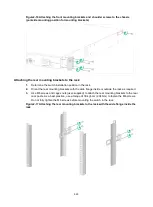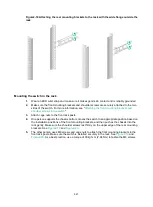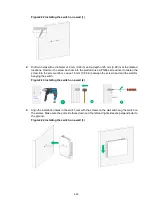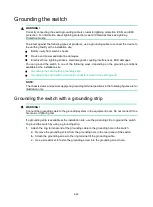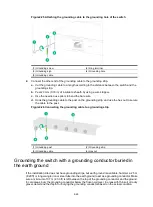
2-27
If zinc-coated steel is used, the following dimensions requirements must be met:
•
Angle iron
—A minimum of 50 × 50 × 5 mm (1.97 × 1.97 × 0.20 in).
•
Steel tube
—A minimum of 3.5 mm (0.14 in) in thickness.
•
Flat steel
—A minimum of 40 × 4 mm (1.57 × 0.16 in).
•
Round steel
—A minimum of 10 mm (0.39 in).
Weld the yellow-green grounding cable to the angel iron or steel tube and treat the joint for corrosion
protection.
Figure2-27 Grounding the switch by burying the grounding conductor into the earth ground
(1) Grounding screw
(2) Grounding cable
(3) Earth
(4) Joint
(5) Grounding conductor
(6) Chassis rear panel
Verifying the connection after grounding the switch
•
If you ground the switch by using a grounding strip, perform the following tasks:
a.
Use a multimeter to measure the resistance between the switch grounding terminal and
grounding point, and make sure the resistance is less than 0.1
Ω.
b.
Use a grounding resistance tester to measure the grounding resistance of the grounding
strip, and make sure the grounding resistance is less than 1
Ω.
•
If you ground the switch with a grounding conductor buried in the earth ground, perform the
following tasks:
a.
Use a multimeter to measure the resistance between the switch grounding terminal and
grounding point, and make sure the resistance is less than 0.1
Ω.
b.
Use a grounding resistance tester to measure the grounding resistance of the angle iron in
the ground, and make sure the grounding resistance is less than 10
Ω
. For locations with
high soil resistivity, sprinkle some resistance reducer to reduce soil resistivity or replace soil
around the grounding strip with soil with lower resistance.
For information about resistance measurement, see
H3C Network Devices Lightning Protection
Guide
.








